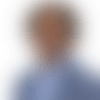The fantasy tight end position has been a riddle wrapped inside of an enigma stuffed into a mystery. But maybe it doesn't have to be. Let's try to make sense of it together. You can find Part 1 and Part 2 of the series here.
Back in the Before Times, when we used to work in offices and had communal kitchen and eating areas, the corner office types at NFL Media had an idea to offer snacks. This isn't a particularly new or cutting-edge idea. Plenty of other big companies do the same for their employees.
The twist is that our snacks were billed as "healthy." They mostly felt like a collection of ingredients that almost went together -- but not quite. That left you with deciding how good some of these things could possibly be. Sometimes you'd score with the cauliflower pretzels. Other times, you'd swing and miss on peanut butter ginger chews. Yes, these are all real things.
I'm guessing you didn't come here to hear about our company snacking habits. (Side note: I do appreciate a lot of you wading through so many of my esoteric, borderline-emo asides to dig out a few kernels of fantasy knowledge.) But in so many ways, our breakroom goodies relate to the mid-tier of tight ends that has caused us to throw up our hands in frustration. Sometimes everything on the label looks good, but then you just want to be rid of it before too long.
That was probably how a lot of fantasy drafters felt about Evan Engram in 2020. All of the ingredients were there – an athletic pass-catcher with a large target share in an emerging offense with a young quarterback. Engram turned out to be a short-yardage option who was plagued by drops and didn't see many looks near the end zone. That's no way to live.
How should we look at these mid-tier tight ends to end up with something that looks more appealing week-to-week than your average streamer? You can break it down into four categories.
- The Target Monsters
- The Air Yards Brigade
- The YAC'ers
- The End Zone Mavens
Each comes with their own level of risk and ideally, you'd like to find a player who combines two or more of the attributes. But let's dive in, shall we?
The Target Monsters
Examples: Logan Thomas, T.J. Hockenson, Mike Gesicki
This is self-explanatory. Some of these players aren't going to be big-play specialists. They're volume shooters. In tight end parlance, that's around five or more targets per game. They might offer mediocre catch rates and yardage totals. But catch enough check downs and you could end up with a decent number. Let's ignore for the moment the point about some of these players being the reason for any kind of full-point PPR backlash.
These guys are on the field a lot and quarterbacks are looking in their direction. In a perfect world, a lot of these looks are coming because they are among the primary reads in a passing game. Those types of targets are sustainable. It's why the Mark Andrews, Hunter Henrys, and T.J. Hockensons generate fantasy draft buzz. On the flip slide, 89 targets for Dalton Schultz in an aerial attack that leans on three talented wide receivers feels very hard to duplicate, regardless of Blake Jarwin's 2021 status.
Of course, it's fair to examine some of these numbers a little deeper. How much did our target monsters eat at someone else's expense? Would Hockenson or Gesicki have seen the same target share if their respective teams had healthier wide receivers? What exactly is the offensive plan in Washington … and does it really involve Logan Thomas long-term?
None of those "what-ifs" will take away what happened in 2020, but if we're looking for sustainability next year and beyond, it could be important to ask yourself some of those questions in advance of draft day.
The Air Yards Brigade
Examples: Jared Cook, Rob Gronkowski, Mike Gesicki
Last week, I wrote that while air yards per target isn't the most elegant way to forecast a player's fantasy potential, it's at least reason to be hopeful about a player's ceiling. After all, it's a lot more satisfying to take a few large bites rather than a lot of small nibbles.
Which, coincidentally, is my philosophy with eating pretzel sticks and smokehouse almonds.
The reason I describe this metric as inelegant is that it only means that an offense is targeting a player farther down the field. It doesn't necessarily mean that the quarterback and pass-catcher are connecting. Anyone who started a Steelers receiver during Duck Hodges' reign of terror understands what I'm talking about.
But targets are a big part of opportunity. And opportunity is the lifeblood of fantasy production. I would personally prefer that those opportunities come farther away from the line of scrimmage -- especially if they aren't coming that often.
The YAC'ers
Example: Tyler Higbee, Jonnu Smith, Noah Fant
Not everyone can be a downfield threat. Some guys just must do work after the catch. Here's the rub: It's not just about the raw numbers. Sure, it's nice to see a guy compile huge yards after the catch numbers by the end of the season. But that could owe to getting a lot of opportunities. There's plenty of overlap between guys with big raw YAC totals and players who see a lot of targets.
What we're looking for here are players who can be consistently elusive and can win in YAC over Expectation. Are these players regularly getting more than what the defense is giving them? Sometimes those yards are baked into clever plays. Other times, it's about being able to break a tackle or making defenders miss. Of all the categories, this might be the least predictive and might not always add up to big totals. But those hidden yards can be important, and we'll take anything we can get.
The End Zone Mavens
Examples: Mark Andrews, Mike Gesicki, Hunter Henry
This isn't quite as simple as "guys who score a lot of touchdowns," though that would be nice. Instead, it's more a portrait of players who get a lot of looks around the goal line. Touchdowns are fickle beasts but they're much less persnickety for players who are getting consistent targets around the painted area.
In some instances, it might be a large argument for a player's fantasy viability. Rob Gronkowski had just two games this season with more than 70 receiving yards. His 45 receptions ranked just 18th at the position. But Gronk led all tight ends with 14 end zone targets and finished the season with seven receiving scores -- good enough for him to slide into the top 10 by the end of the year. Similarly, Mark Andrews was a letdown after his breakout 2019 campaign. Yet, 12 end zone targets and seven tallies helped mitigate against severe drop-offs in receptions and yards from the year before.
Once again, Gesicki is hanging around with intriguing numbers in one of these categories. He was unequivocally a disappointment based on the hype that built for him last summer. Some of that disappointment was based on a long mid-season touchdown drought and overall erratic production. That underperformance wasn't for a lack of trying on the Dolphins' part. Miami took 11 end zone shots at Gesicki last season but only connected three times. It was the worst catch rate (27.3%) among tight ends with 10 or more goal line targets. It was also the second straight season he had double-digit targets in that area of the field.
And it could be enough to get me to consider him in the late rounds again next year. *sigh*
There is still risk in targeting mid-tier tight ends. The potential production isn't likely to match the draft capital needed to acquire the player. Nonetheless, many of them will be drafted next season. If you decide to make that move, consider the above principles to make the best choice possible. Come back next week when I wrap things up with the late-round upside options.
Now if you'll excuse me, I'm going to get a snack.












